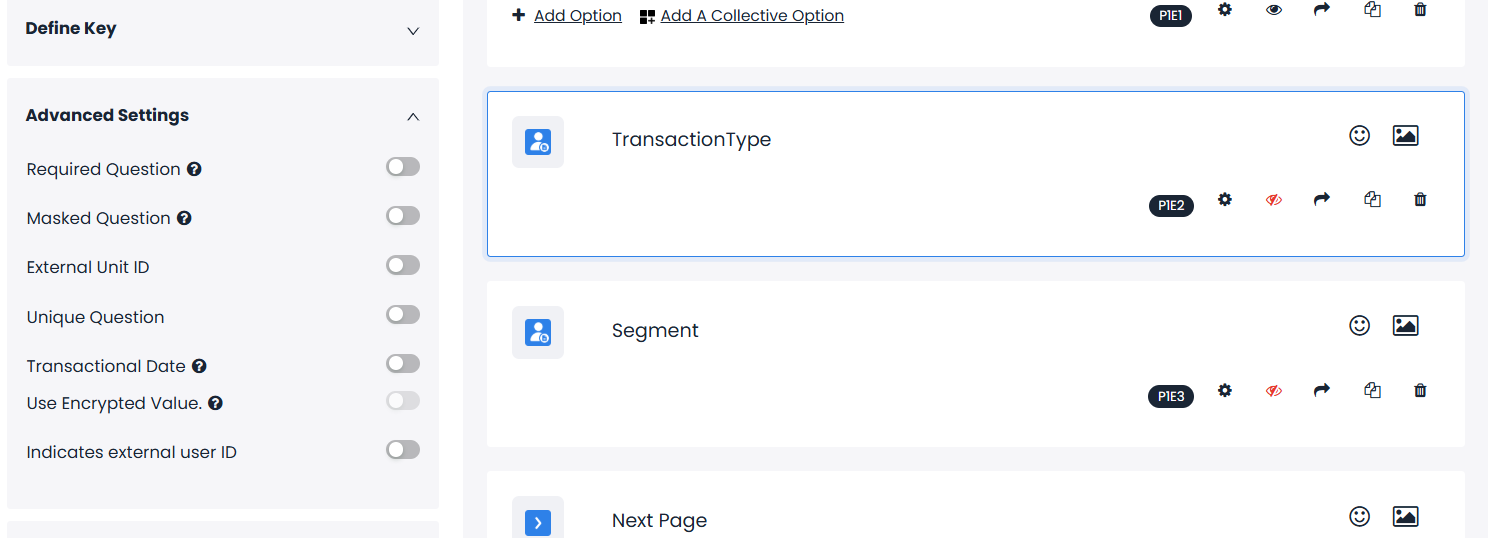Customer Schema
Customer Schema enables users to write data into contacts and feedback via customized links.
This allows features like Workflow to use the data fed to Pisano in various automation, keeping the context intact, therefore providing appropriate insight and reporting capabilities.
The list of customer schemas can be accessed via Channels > Inferred tab or Settings > Schema page.
When adding a new schema type, users are asked to provide name and code. Name is the value Pisano will show on the user interface across various features. Code is the value that will be used with the integration. It is recommendable to use code as name as well to access integration value easier in future configurations.
Schema types can be boolean, date, integer, list, string, float and date time.
Each type provides different capability when setting up Workflows. While utilizing Workflows with hidden data fields, customer schemas should be added to a flow.
| Type | Description | Example |
| Boolean | Represents True or False values | is_sunny = True |
| Date | Used to represent calendar dates | Example: birthdate = "2024-09-17" |
| Integer | Represents whole numbers (without decimal points) | Example: age = 30 |
| List | Represents a collection of values | shopping_list = ["apples", "bread", "milk"] |
| String | Represents text or characters | greeting = "Hello, World!" |
| Float | Represents decimal numbers. | temperature = 23.5 |
| Date Time | Used to represent calendar dates with hours | birthdate = "2024-09-17 04:59:35" |
Warning: The date and date time format should be chosen correctly for integrations to work.
Archiving a schema type removes it from combo-box menus of applicable features. A schema cannot be deleted.
To be able to edit a schema's data type, that schema must be removed from all flows which contain it.
Adding Customer Schema to Flows
The customer schema field is selected from the personal information questions section in the flow.
The name of the data field is selected from the settings section of the customer schema question type.
If the automatic labeling function is turned on, you can use comparative charts in reports according to the customer schema field. You do not need to set up a labeling task for this. You can turn off this setting for data that you do not want to be profiled.

In the advanced settings section,
- Required question,
- masked question,
- external unit id (for branch/unit assignment),
- unique question (for data coming with integration),
- transaction date (for reporting according to transaction date in reports),
- encrypted data (for receiving encrypted operational data),
- Indicates external user id (for assigning feedback on a personnel basis and for reporting) features can be used.
Customer Schema and Workflows
While configuring a Workflow, each schema type enables certain features, allowing a user to customize the automation setup better. Below features are enabled for each schema type. Operator means defined functions.
Boolean
Operator: Equals, Yes or No
Date
Operator: Exact, Is, Between, Greater Than, Less Than
"Is" operator provides following options for this data type.
Today, Yesterday, This Week, Last 7 Days, Last 30 Days, This Month, Last Month, Custom
Integer
Operator: Equals, Not Equals, Greater Than, Greater Than or Equals, Less Than, Less Than or Equals, Between
List
Operator: Contains, Not Contains
String
Operator: Exact, Contains, Not Contains
Float
Operator: Equals, Not Equals, Greater Than, Greater Than or Equals, Less Than, Less Than or Equals, Between
Date Time
Operator: Between, Contains, Equals, Exact, Greater Than, Greater Than or Equals, Is, Less Than, Less Than or Equals, Not Contains, Not Equals


